Big 3 Again Big at Detroit Auto Show
Filed under: Equinox, Features, Autos
By John Gilbert
DETROIT, Mich. — Chevrolet became king of the “good ol’ boys” at the North American International Auto Show in Detroit by kicking off media preview days with the celebration of its biggest day ever.
Chevrolet swept both the 2014 North American Car of the Year with the restyled Corvette and North American Truck/Utility of the Year with the revitalized Silverado. While electric cars, hybrids, and ultra-high-gas-mileage technology filled Cobo Hall with a sea of advanced engine technology, the awards were swept by two Chevy stalwarts — with nary an overhead camshaft found amid any engines available in either of the two vehicles — as the Corvette and Silverado won the hearts of tradition-bound selectors.
The car and truck announcements, voted on by 49 independent media types, kicked off the early morning start to two days of media presentations for a reported 5,169 automotive writers, broadcasters and bloggers who converged on Motor City. Their presentation was immediately followed by a parade of what was reported as 50 vehicle unveilings, many of them worldwide introductions.
The resurgent “domestic” manufacturers of the traditional Detroit Big Three made strong showings, and even though the global marketplace blurs the lines, with numerous import brands made in the U.S., and more U.S. brands making their vehicles outside U.S. borders, the delineation continues, which at least allows for more convenient categorization: Read more
NHL draft, U.S. symbol highlight July 4th
By John Gilbert
There is Duluth Huskies and American Legion baseball, dirt track auto racing, and recreational sports, to occupy our summertime in the Northland. For me, sightseeing anywhere near Lake Superior is a highlight, and spotting the occasional wildlife critter sets it apart.
On Monday, I returned home to Lakewood after doing my KDAL radio show, and as I got out of the car I saw a shadow over the bright sun. Glancing up, I saw a big, immature bald eagle circling above my driveway. I went inside, and while eating a little lunch, I again saw a shadow pass swiftly over my deck. I picked up my camera and went out on the deck, searching the sky for a possible return flight of the eagle.
As I got to the corner of the house, I looked up in the tall spruce tree closest to the house, and spotted a white object at the very top. I did a quick-draw with my camera, and inspired the bird to fly. It was a full-scale, mature bald eagle, and it flew quickly away as I caught just one good photo.
Maybe wildlife photography qualifies as my new favorite summertime sport.
DRAFT ENDS HOCKEY SEASON
We have hit July, and finally the tumultuous 2013-14 hockey season can be put behind us. Last Sunday’s NHL amateur draft had some surprises and some adjusting by most of the league’s teams, and only time will tell how effective those moves were.
The Minnesota Wild suffered what I think is a difficult blow by trading Cal Clutterbuck to the New York Islanders. Clutterbuck is an always-hustling, always-hitting winger who is among the NHL leaders in hits year after year. Critics said he was expendable as a restricted free agent, and that he didn’t score enough this past season. In my mind, he seemed to score and be in the middle of the action whenever he played on one of the top two lines, but this past season he had reduced ice time, playing on the fourth line much of the time as general manager Chuck Fletcher acquired better offensive players to play ahead of him.
The Wild added Swiss prospect Nino Niederreiter from the Islanders in the Clutterbuck trade, and drafted 6-foor-3 defenseman Gussav Olofsson on the second round. Olofsson moved to the U.S. from Sweden when he was 6, grew up in San Jose, made the USHL all-rookie team playing at Green Bay, and will play at Colorado College this fall. The Wild also drafted Canadina juniors, forward Kurtis Gabriel of Owen Sound on the third round, and defenseman Dylan Labbe from Shawinigan, Quebec, on the fourth.
The big trade was the Wild’s biggest news. At the still-young age of 25, Clutterbuck was a fan favorite at Xcel Energy Center, and has a bright career ahead of him for the Islanders, who were one of many teams trying to gain his services. Once again, we’ve heard from unknowing newspaper and radio critics in the Twin Cities who acted as though a down year in scoring in only his third full year in the NHL rendered Clutterbuck expendable. However, those same cynics ripped Fletcher for trading Clutterbuck and a third-round draft pick for Niederreiter. One guy said he’s never scored, but did well for Switzerland’s team in the World Junior Championships.
Hold on, there, hockey bozos. Nino Niederreiter is a 6-foot-2, 210-pound prospect who was drafted at age 18 by the Islanders as the fifth player taken in the first round in 2010. He came to North America and played for the Portland Winterhawks in Canadian Major Junior hockey, where he scored 130 points in 120 games. He turned pro and played in 64 games for the Islanders over the past two, scoring only two goals and one assist — but playing only a few shifts a night on the fourth line and sitting out frequently. For some reason, the Islanders never gave him the kind of look the Wild gave to Charlie Coyle or Jonas Brodin this past season, and he wasn’t even invited to training camp, even after scoring.28 goals in 74 games for Bridgeport of the American Hockey League. So he asked to be traded.
Amid all of this, one of the great stories of the past hockey season was Switzerland’s performance in the World Championships — not juniors, but the big one. Because of its recent improvements, and a few upsets in international play, I knew Switzerland had some good young players, but this year it all came to blossom. Switzerland beat everybody, rolling through the entire preliminary round undefeated. Then it won its first playoff game, while Team USA was beating Russia 8-3. I predicted on my KDAL radio show that the U.S. had best be prepared, because following up such a great victory over Russia offered no insulation against an upset against, of all teams, Switzerland. Sure enough, Switzerland beat Team USA in the semifinals, and advanced to the Gold Medal game, where it lost to defending champ Sweden, which had just added the Sedin twins from Vancouver to its all-star NHL roster. That meant Switzerland wound up with the Silver Medal — its best finish ever.
Niederreiter, after scoring 2-1–3 in 64 NHL games for the Islanders, scored 5 goals and 3 assists in the World Championship tournament, against the best available pros in the world.
The cynics make it sound like Clutterbuck wasn’t worth much, but the new guy is only a junior player. I hate to see Clutterbuck leave the team, but, for certain, it sounds as though Nino Niederreiter could be an impressive young prospect who could seriously help the Wild right away.
Free agency has juggled the scene around the NHL, as general managers try to trade or buy out high-end players to stay under the NHL salary cap. Tampa Bay, which is a top threat with Martin St. Louis and Vincent Lecavalier as a 1-2 punch, failed to make the playoffs this past season, while St. Louis won the scoring title, but Lecavalier suffered with injuries. So Tampa Bay bought out his contract for the astounding figure of $32,666,666. If he bounces back from the injuries, Lecavalier should be a great player for somebody, and he will have a nice bank account to soothe him while he chooses a new team.
Then there are the Vancouver Canucks. Remember how they made the critical decision that veteran goaltender Roberto Luongo was expendable, and it was time to give the No. 1 job to Cory Schneider? Well, Schneider had his problems, and Luongo got back into the picture, and ended up No. 1 for the playoffs — which the Canucks promptly lost in the first round. After trying unsuccessfully to trade Luongo all season, the Canucks have now traded Cory Schneider instead — to the New Jersey Devils, where, at age 27, he will now get tutored by Richard Brodeur and undoubtedly will be groomed to take over and become a superstar.
Minnesota homestate players once again proved why hockey is the most significant contributing sport to the pros, with 14 players taken in the NHL draft. They include Avery Peterson of Grand Rapids, taken in the sixth round by the Wild. He apparently has decided to pass up his senior year with the Thunderhawks to take his sharp-shooting eye to the Sioux City USHL team, according to the Minneapolis Star Tribune.
A key pick is Washington’s fifth-round selection of Blake Heinrich, a talented and hard-hitting defenseman from Hill-Murray who played for Brett Larson at Sioux City this past season, when he could have been a senior with the Pioneers. Heinrich is headed for UMD and is my choice to be a crowd favorite and make every foe’s hate-to-play-against list.
Also in the draft, Michael Brodzinski from Blain was picked by the San Jose Sharks, and Jonny Brodzinski, his brother, was taken on the fifth round by the Los Angeles Kings. Michael, the younger, is a defenseman and went on the 141st pick, while Jonny, a forward, was taken with the 148th pick. Now, Michael is considered the better prospect, perhaps, but he’s played high school with a year of junior, while Jonny joined the St. Cloud State Huskies and scored an amazing 22 even-strength goals as a freshman, helping the Huskies to the WCHA championship and into the NCAA tournament.
Fantastic Stanley Cup final we recall, with the Chicago Blackhawks completing an almost perfect season by beating the Boston Bruins in six games for the Cup, after starting this lockout-shortened season with an unprecedented 21-0-3 record, then finishing with the best overall record in the NHL. After beating the Wild in five games, the Blackhawks responded to a 3-1 deficit in games against the Detroit Red Wings with three straight victories, and went on to beat the Los Angeles Kings, and the Bruins, to win the Cup.
The glory can pass quickly for some, however. The Blackhawks faced the departure of some of its top young players, so they traded two vital parts of their Stanley Cup championship team by sending Dave Bolland to Toronto and Michael Frolik to Winnipeg, both for draft choices.
TWINS OUTFIELD, ALMOST
While the Minnesota Twins stay in contention with hot and cold performances, try to imagine how the team would look with an outfield of Michael Cuddyer in left, Carlos Gomez in center, and Torri Hunter in right. Gomez is the wall-climbing ballhawk in center for the Milwaukee Brewers, and is hitting .317 now that he’s matured into a solid Major Leaguer. Hunter is aging, but gracefully, as a .300-hitting right fielder for the Detroit Tigers.
And Cuddyer? Well, we can only go back to the trade of the popular Cuddyer for Josh Willingham, as the Twins tried to improve on the home run tally from its outfield. At the time, I wrote that Cuddyer was just as good a hitter, and a much better outfielder, although Willingham has been very effective hitting home runs and driving in runs for the Twins.
However, right now, Willingham is hitting a mere .224, with 10 home runs and 37 RBIs. Cuddyer is hitting .346 for the Colorado Rockies, standing second in the National League. As of Monday, Cuddyer also was on the Major League best 27-game hitting streak. And he’s still playing right-field walls and throwing strikes back to nail runners in the infield.
Crossing over to Crossovers
By John Gilbert
Can a big, spacious Tahoe or Suburban be effectively replaced by a Terrain, or an Encore? Can an Expedition or Explorer be effectively reduced in size to an Edge, or maybe an Escape? And how about Mazda, which celebrated when the full-sized CX-9 won North American Truck of the Year honors three years ago — can its tasks now be entrusted to the CX-5?
If you haven’t noticed, the players have been multiplying and shrinking at the same time, and at a record rate, and if you can’t tell the players without a program, examine the decreasing numbers. The X5 led to the X3, and now to the X1; the XC-90 is joined by the XC-60; the LR-3 now is joined by the LR-2; the highly successful Encore gave Buick a luxurious and popular vehicle and for an encore, it quickly created a diminutive cousin, the aforementioned Encore; and a decade after Toyota added a third-row seat and V6 power to enlarge the RAV4, it brought out a new RAV4 — smaller, and without the third row and V6.
Welcome to the new wave of crossovers, just in time to attract buyers who are crossing over so much that they — as much as the compact vehicles they are buying — define the term “crossover.”
Detroit automakers ran into serious financial problems a few years ago, partially because of a three-way collision at their economic intersection of dependence on high-profit but gas-guzzling large Sport Utility Vehicles, which ran into a faltering economy, right at the point of unprecedented rising gasoline prices. Government bailouts, discontinued models, and an entirely different way that consumers and auto-makers saw their business were the result, and it hasn’t abated.
Large SUVs plummeted in popularity, as buyers switched to smaller SUVs, which were called crossovers because they did the work of compact trucks, but were built on smaller car platforms, making them lighter, more agile, and more fuel-efficient. Maybe the kids had grown and left home, reducing the need for a large-family hauler, or maybe frighteningly low fuel economy figures pinched the budget, but downsizing made sense for a lot of reasons.
A decade ago, there were only about a half-dozen compact SUVs, but as virtually every manufacturer tries to outdo the competition with better and more compact small SUVs, now there are over 60, counting a few crossover-crossovers, with more coming out every year.
The popularity of crossover SUVs has also created a couple new segments of buyers. Large and midsize car customers are moving down as their kids depart, while some subcompact and compact buyers move up as their families grow. Both groups find that crossover SUVs house occupants and gear comfortably, and have joined the large-SUV buyers in downsizing to crossovers, pleased with sticker prices and fuel economy numbers that used to be the haven of only economy cars.
Here, then, are just a few of the new-breed of crossovers. Surely there will be more to come.
GMC TERRAIN
Perfect for buyers, as well as manufacturers, who feel the need to approach downsizing gradually, the Terrain is GMC’s version of the Chevrolet Equinox, but it definitely has more of a truck-like appearance. While shorter than the larger truck-based GM SUVs, it seems GMC felt the need to make the Terrain still look like a truck, albeit a truck with quicker reactions on its stubbier 185.3-inch length. As the new kid the Terrain is more versatile than the slightly larger and older Acadia, which, while similar in concept with front-wheel-drive/all-wheel-drive layout, comes only with the 3.6-liter V6, while the Terrain offers a base 2.4-liter with 182 horsepower, and adds the option of the rejuvenated 3.6 V6 with its 301 horsepower and 272 foot-pounds of trorque, and a 1,500-3,500-pound towing capacity and a 1,200-pound payload. Fuel economy shows 17 city 24 highway for the V6, with 20-29 for the AWD four.Together, the Acadia and Terrain combine for 30 percent of all GMC sales. New for 2013, the Terrain adds a high-end Denali version, loading up on luxury features. A lowered step-in and height, still leaves room for room for seven or eight passengers, depending putting three in the second row. Soft-touch dashboard material, with aluminum and wood, or wood-like, trim, the Denali has satin chrome and a real wood steering wheel. A 7-inch color touch screen is reconfigurable for Bluetooth, smartphone, voice recognition, and USB connectivity. Side and rear alerts, and a forward collision alert, plus lane departure warning and rear park assist are among features, and rear seat entertainment should ease any kids-on-trips issues. The test-drive Terrain Denali showed a quite-loaded sticker of $36,275 with the 4, and $40,425 with Denali trim packages that include cargo, trailering and navigation.
BUICK ENCORE
The Enclave has been such a huge hit for Buick that it makes sense to build a mini-Enclave, and the Encore pretty much fills that bill. Buick has done well in GM’s restructuring, and it is more of a global offering, with an engine first designed in Germany in a vehicle built in Korea, with its content 51 percent from Korea and 18 percent from China. Buick builds the comparatively small 1.4-liter 4-cylinder in the U.S., and it’s turbocharged to develop 140 horsepower and 148 foot-pounds of torque — more than adequate to power the smallest of all GM SUVs at 168.5 inches in length. It has dashing good looks and a lot of premium features, typical of Buick, and its front-drive platform works well with an Active on Demand all-wheel-drive system that uses a magnetic charge to engage a clutch at the rear axle when stopped to assure that you get some rear-drive push on start-up. Fuel economy has an EPA estimated 23 city and 30 highway, and compared to the larger and more luxurious Enclave, the Encore is quick-reacting and fun to drive as a 5-passenger vehicle. Bose active noise cancellation technology helps make the interior quieter, and the voice-activated IntelliLink on the full-color display gives it a luxury refinement. At a base price of $29,690, the loaded Encore Premium stands at $32,975 and includes 18-inch chrome wheels, navigation with the upgraded audio system are included as options.Front and rear Ultrasonic parking assist, the 7-inch screen with all its input jacks, remote steering wheel controls, rain-sensing wipers, heated leather seats, lane departure warning, Bluetooth, Bose premium audio, heated steering wheel, foglights, roof rack and remote starter system are all on the lengthy list of standard equipment.
HONDA CR-V
The acknowledged standard-bearer of the crossover SUV trend, Honda’s CR-V was totally redesigned for 2012 and retains its popularity with slight revisions for 2013. The high-tech 2.4-liter 4-cylinder now makes 185 horsepower and 163 foot-pounds of torque with a 5-speed automatic transmission as the only drivetrain. It works smoothly and efficiently, and adds AWD as an available option to the standard front-wheel drive. The system works well, with power going to the front wheels unless the computer detects the threat of slippage, when it apportions power to both axles. The exterior makeover makes the CR-V far more fashionable with a bold grille and stylish rear treatment. Electric power steering, stability control and brake assist completes an impressive safety resume, and interior features on the EX-L include leather seats, navigation with voice recognition and rear camera. The audio system upgrade has seven speakers with a subwoofer, and all the information connectivity features. Driver’s seat is 10-way power, and an EX feature to read and respond to text messages through the audio connectivity is a nice touch. Foglights and a large sunroof also are nice touches on the EX, which is the top of the line and has a sticker of $31,025 in the L (for Leather) upgrade. Fuel economy remains a mainstay with EPA numbers of 22 city and 30 highway.
FORD ESCAPE
For over a decade, Ford built its Escape into a stronghold as a spinoff of the Mazda Tribute design, but for 2013, the Escape jumps into its own new skin, with a high-style wedge front and neatly done rear in all-new package that lets the Escape rival larger SUVs, and outdoes many of them with technology. For example, Ford decided to go with fewer cylinders to gain fuel efficiency, and turbocharge the smaller engines if more power was desired — a feature called EcoBoost that runs throughout Ford products. In the Escape, the base engine is a 2.5-liter 4-cylinder with 168 horsepower and 170 foot-pounds of torque, running through a 6-speed automatic in either front or all-wheel drive. As the top option, a 2.0-liter EcoBoost 4 is turbocharged uyp to 240 horses and 270 foot-pounds of torque, lifting the Escape into the realm of 3,500-pound towing capability. Possibly the best compromise is a 1.6-liter 4 EcoBoost, which uses turbocharging to go beyond the 2.5 power with 178 horsepower and 184 foot-pounds of torque — a definite edge in power over the CR-V, for example. The turbocharging doesn’t hurt fuel economy, if you keep your foot away from power-surges, and EPA numbers go from the low to mid-20s to over 30 mpg. With Base S, SE, SEL, and top-line Titanium models, the price can rise from $23,295 to $35,630 for the Escape, which measures 178.1 inches in length. Even the base model is well equipped, with a variety of nav screens and design touches. Ford’s SYNC connectivity with voice-activated controls for phone and entertainment start in the SE and available features move up by model. Ford’s new-wave of technology includes Sony audio, premium leather seats, remote start, rear seat recline, ambient lighting, a power liftgate, and a brilliant bag-carrying feature, which is that when you approach the rear of a locked Escape, if you have the key fob on your person, you can wave one foot under the rear bumper and the hatch will spring open. Very handy.
KIA SORENTO
Somewhat subtlely, the Kia Sorento carved itself a nice niche in the midsize SUV bracket, outdistancing partner Hyundai’s Santa Fe. Both companies have companion smaller crossovers — Hyundai the Tucson and Kia the Sportage — but for 2014 both companies have completely redone their larger crossovers. The Hyundai Santa Fe now comes in long form or, as the Sport, in two-row form, both with catchy styling. It’s made in the Montgomery, Ala., plant. But 100 miles up into Georgia, Kia’s newly restyled Sorento is built in West Point, Ga., and it shows no indication of losing popularity. In fact, with a base 2.4-liter 4-cylinder pumped up to 191 horsepower and 181 foot-pounds of torque by using the direct-injection version, performance is improved by 16 horses. The V6 also is upgraded, dropping from 3.5 to 3.3 liters, but gaining in sophistication with direct injection, to 290 horsepower and 252 foot-pounds of torque. Both use a high-tech and smooth-shifting 6-speed automatic transmission. Fuel economy can reach EPA estimated 32 mpg, and while the V6 drops a bit in fuel economy, it takes the towing capacity up to 3,500 pounds for those hauling a boat or camp trailer. The smaller SUVs perform well, but the 184.6-inch-long Sorento offers an optional third-row seat for family hauling more kids or separating those already present. What makes the Sorento a major bargain is that it starts in the mid-$20,000 range, barely more than the Sportage, and if you option it up and over $30,000 to the $35,000 range, you can add some major features, such as a panoramic sunroof, air-cooled driver seat, navigation, upgraded trim.
MAZDA CX-5
There are new crossovers, and then there are NEW crossovers. The CX-5 came out for 2013 as a vehicle much smaller than the CX-9, and shorter than the CX-7, but its overall design gave it more interior room than the CX-7, which it ultimately will replace. The design is just part of the package that Mazda calls Skyactiv. It includes all the aerodynamics and strong but light body parts, and mostly it included Mazda’s new Skyactiv 2.0-liter 4-cylinder with a totally new concept of smaller bore/longer stroke/direct-injection and Miller stroke valve timing, plus new in-house built 6 speeds, both stick and automatic. The drivetrain was first tried in the Mazda3 compact, with part of the manifold chopped off to allow it to fit, and it delivered 40 miles per gallon with improved power. The CX-5, on the other hand, was built from the start to house the whole engine and manifold, and it came away with a 13-1 compression ratio and still burns regular fuel. Some critics complained about a lack of take-off pep in the 155-horsepower, 150 foot-pounds of torque engine, but the wide-ratio gears were purposely built for fuel economy, not drag-racing. Once under way, with the revs up, a CX-5 is about 3 seconds a lap faster than the Mazda3 Skyactiv for a hot lap around Mazda Speedway at Laguna Seca, and it will get in the mid to high 30s for highway mpg. The CX-5, built light, lean and strong with an abundance of high-grade steel, finished a close second out of the box to the Ram 1500 in North American Truck of the Year voting. For 2014, Mazda addressed its critics by adding an optional 2.5-liter Skyactiv 4, built for the new Mazda6 sedan. and with 164 horses and 185 foot-pounds of torque, it satisfies the most power-crazed crossover buyer, even though the gas mileage dips to 24 city and 30 highway from 26/35. With its slick styling, roomy interior and high-class interior features, plus all the latest connectivity, the CX-5 goes to the head of the class among crossovers at a price range of $22,000 for front-wheel drive and $31,000 for a loaded Grand Touring model with the Tech package. Having to choose between 30 mpg and more potent power, or 35 mpg and adequate power, makes worthy alternatives for your high-tech crossover.
Lexus IS 250, 350 hit elusive high mark
By John Gilbert
BROOKLYN, MICH. — Every builder of a sports sedan hopes it might be comparable to the legendary BMW 3-Series. Some have come close, most haven’t. Some have missed by a mile. It may well be, however, that Lexus has just found the Holy Grail of sports sedans for 2014, with the IS 250 and IS 350.
Lexus assembled some of the nation’s auto media types to sample both models of the hottest and smallest Lexus sedan at Michigan International Speedway, and after driving from beautiful downtown Jackson, Mich., to the MIS track, and then darting through some exercises at specially set up courses at the track, the realization hit me that the two IS models might reach the elusive peak for a very significant reason. The IS twins have done their best to rise to the BMW 3’s level of quick acceleration, flawless handling, and technical excellence, but they also have found the secret to achieving a level of overall, every-drive exhilaration, which used to be the sole domain of BMW.
We were given autocross curves and straight chutes, and after some spiriting driving in the IS 350, I chose the IS 250 because it was the only car there with all-wheel drive, and my thought was winter-driving folks would need that feature, although they might prefer the more potent IS 350. In that car, I was instructed to accelerate as hard as possible, going between two cones, and approaching several sideways cones pointing right. I was then supposed to swerve aggressively to miss them, then straighten out to finish between another set of cones. The idea was to show off the stability control, and the car’s exceptional agility to miss an accident and retain control.
The final exercise was to do the same thing with stability control turned off, but Lexus officials didn’t trust us to perform it ourselves, but to ride with their professional drivers to fully experience it. Reluctantly, I did that, having watched several drivers make the swerve, then fishtail violently after trying to straighten. My driver did the same thing. Before his next pass, I told him about growing up on steep and slippery avenues of Duluth, Minnesota, and experience in a few emergency driving programs.
“I’m convinced,” I said, “that 90 percent of accidents happen when a driver swerves, and then over-corrects when attempting to straighten out.” He agreed. Then I said, “If I were a pro driver hired by Lexus to show that an emergency swerve can be dangerous without stability control, I might swerve and then over-correct to make it look worse than it was.”
He looked at me with a wry grin, and said, “You’re exactly right.” And with that, he circled around for one last run, sped through the cones, swerved abruptly to the right, and straightened out perfectly, smoothly, and without the fishtail of over-correction.
When I got back to the Lexus officials, all I said was, “This car is even better than you think.” Read more
Speedy hockey, Speedgrass, and a great burger
It was close to being the perfect scenario. Or at least turning a difficult decision into a great night out.
On Tuesday, we faced the dilemma of desperately wanting to attend the Trampled by Turtles concert at Clyde Iron Works, starting at 9 p.m. However, the Minnesota Wild, after a breathtaking finish to the regular season, which ended with them clutching the eighth and final playoff spot in the Western Conference of the National Hockey League, was to open the Stanley Cup Playoffs at Chicago on Tuesday night at 7 p.m.
If we stayed home and watched the Wild-Blackhawks game, we’d obviously miss the start of the Turtles concert, and even getting there on time meant being unable to find a vantage point. So I made a phone call to Clyde Iron Works. Knowing they were going to have both the main stage and the mezzanine going as part of this week’s Homegrown Music Festival, and also knowing they serve food, I asked if, by any chance, there might be television sets in the eating area where we might watch the Wild game. We were assured there was, and we could.
So my wife, Joan, and I got to Clyde about 6:30 p.m., as a couple of pretty good bands were already getting ready to start at 7 p.m. We went upstairs and found a table with a pretty good vantage point of one of the large flat-screen TVs on the wall, and ordered hamburgers. First of all, these weren’t just hamburgers. They were half-pound beauties that took the whole first period to consume. These were burgers that were so good, The Reader should have another “best of” issues, just to name the Clyde burgers as the best in the Twin Ports. There are a lot of good burger places in Duluth and Superior, but the Clyde burger, with a slice of smoky cheddar (Joan got pepper jack and grilled onions), went immediately to the top of the list.
Despite a continuing stream of young adults who had gotten a good start on the Clyde’s supply of beer walking right in front of us and stopping to talk, loudly, between us and the television set, we had a great vantage point as the complete underdog Wild took the ice to warm up for Game 1 against the No. 1 seeded Blackhawks. There was no sound, in the Clyde, naturally, but we watched as Josh Harding pulled on his goalie mask and skated out to the Wild goal. Josh Harding? Yes, we didn’t need sound when a video replay came on to show ace goaltender Niklas Backstrom go down awkwardly attempting to make a save on a warmup rush, then get up and hobble to the bench, and then straight to the dressing room. They will call it a “lower body injury,” although it looked like he either wrenched a knee or pulled a muscle. Whatever, Josh Harding — he of the heroic fight after learning he has multiple sclerosis, and he who hadn’t started a game since January — stalked valiantly out to the nets to start the game. If the Wild were 100-to-1 longshots, it just went to 1,000-to-1.
But Harding is capable, to say nothing of courageous, and he made a couple good saves in the first five minutes. About then, on his second shift on the ice, Cal Clutterbuck carried across center ice and curled in on the left side. Clutterbuck, a right-handed shot, skated hard to the left faceoff circle, then snapped a shot to the inside of a retreating defenseman, and the missile glanced off the arm of goaltender Corey Crawford and went in on the short side.
Harding and the hustling Wild prevented the powerful Hawks from any scoring threats and the score stayed 1-0, Wild, into the second period. Early in the second, Charlie Coyle, one of three rookies in the Wild lineup, rushed in on the left and fired a hard backhander that Coffman blocked, uncertainly. Zach Parise, always hustling, and willing to play half of each shift while being sprawled prone seeking the puck, came hard at the net, as a pair of Blackhawks tried to shove him into the goal. They shoved enough that Parise fell over Coffman and play was whistled dead. The referee, however, called Parise for a penalty for running into the goaltender. It was an awful call, and although the Wild killed nearly all the penalty, right near the end of the power play, Patrick Kane rushed up the middle, attracting three Wild defenders. Kane, one of the slickest men with a stick in the game, made a deft move, then snapped a backhand pass wide to the left, where Marian Hossa was breaking at full steam, and he fired the puck in behind Harding before he could cover.
The 1-1 tie stayed through the entire rest of the second period, and on into the third. We had to choose, and we went into the main hall about then, to try to carve out a vantage point on the balcony. I figured once we did, I could sneak back out every once in a while for a glance at the third period. And then the overtime.
As so often happens in a clash of two teams with some potent big-gun players, the game came down to lesser-names. After 16:35 of sudden-death overtime, Viktor Stalberg rushed up the right side for the Blackhawks, threw on the brakes to freeze the defense, then sent a perfect pass across the slot to Bryan Bickell, who outraced two Wild skaters to break in alone with speed, cut to his right and tuck in the winning goal. Chicago wins Game 1, by 2-1 in overtime.
The Wild played ferociously. They played their best. And Josh Harding was nothing short of sensational. After having absorbed scorn from media types who don’t know hockey, and polite finger-crossing from hopeful fans who thought maybe the Wild could steal a game — just one — had outplayed the Blackhawks through most of the night, and battled them with all they had when the home team gained momentum in the second period.
Remember, the Blackhawks had the best record in the entire NHL, just as the Vancouver Canucks had last season. And the Los Angeles Kings, who were seeded No. 8 in the West a year ago, beat the Canucks and went all the way to win the Stanley Cup. These Blackhawks are better than those Canucks were a year ago, but the Wild, if they can keep playing the same way in Game 2 on Friday night, could get on a roll and be better than the LA Kings were last year, too. As for the Blackhawks, recall also that they were beaten in six games by upstart Phoenix in the first round last year — and five of those games were in overtime. Remember also that our own Masked Fan, just one week ago, picked the Wild to finish ninth in the West and falter their way to finish short of making the playoffs. Oh ye, of little faith! Turn the page and see what he thinks about the Wild now!
Meanwhile, Trample by Turtles was outstanding, playing a lively set that enthralled a mob scene that clogged the main floor of the Clyde Iron Works. We were lucky to be up near the railing in the balcony, although we weren’t lucky enough to get a clear view of the full stage at any one time. But it was a great show. I wonder if they’ve got another Homegrown concert scheduled for Friday night, when it’ll be time for Game 2, and we’ll be about ready for another Clyde Burger.
UMD WINS SPRING GAME!
Speaking of good food at sports events, last Friday was the perfect time to take a walk in the sun and find a vantage point at Jim Malosky Stadium. The event was UMD’s annual spring football game, and new coach Curt Wiese had arranged for the usual feast that the players get to have to instead be turned out for any fans who attended, free of charge. I mean the game was free of charge, and the food — including barbecue from Texas Roadhouse — was free, too.
That time, so dedicated was I to watching the two UMD split squads play football that I passed up the chance to stand in line amid some of the more than 1,200 fans for the barbecue — settling later for a little cole slaw and a couple of other salad-type things — and watched Wiese watch his players. The big turnout celebrated a rare sighting of the sun, and 60-degree temperature, and also was a fund-raiser for UMD lineman Jordan Bauman, who is battling Hodgkin’s lymphoma for the second time.
The new coach has had a little knee surgery, so he’s on crutches these days, which didn’t prevent him from getting out there in the middle of the field for the special-rules game, where nobody was allowed to blast any quarterbacks, or make runbacks of kicks or turnovers. That way, nobody could impress the coach by running over him, either.
The Bulldogs proved the answers to at least two questions: 1. Is there life after Bob Nielson? and 2. Is there life after Chase Vogler? Nielson, who lifted UMD to a pair of NCAA Division II national championships before leaving after last season for a Division I job, appears to have set the table for Wiese, who was his offensive coordinator for the last five seasons. In the last four of those, Chase Vogler was the quarterback, breaking all sorts of UMD records and proving to be a one-man catalyst for Wiese’s clever offense.
The score didn’t matter, although the Whites beat the Maroons 10-7 for those keeping score. Tyler McLaughlin kicked an extra point and made a 22-yard field goal for four of the White’s points. And the quarterback situation appears to be adequately filled, even though competition will continue right on through next fall’s camp. Junior Brent Jorgenson is one of the prime candidates, although freshman Drew Bauer from Eagan might be a better scrambler and runner from the gang of five that are fighting for the job. Bauer was 5-for-8 with a touchdown pass, and ran well, although those quarterbacks were getting special-ed treatment with their orange no-hit jerseys, so we really didn’t get the chance to see him scramble for real.


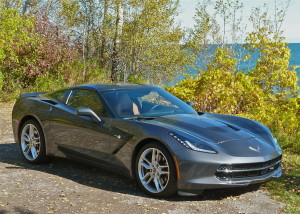
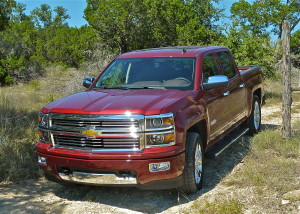
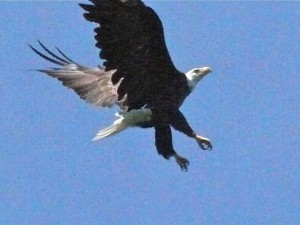

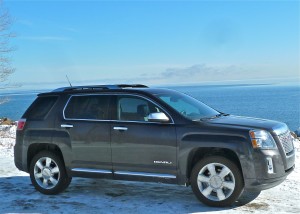
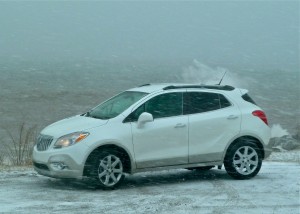
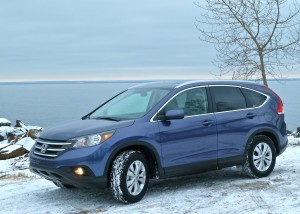
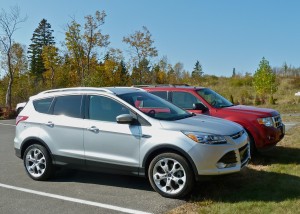

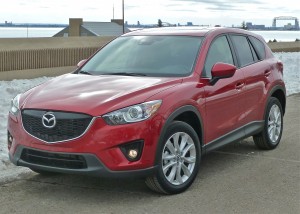
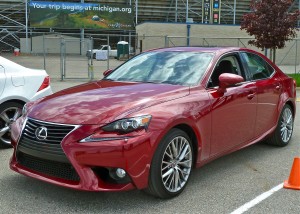
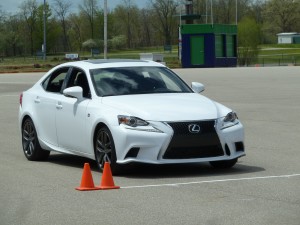
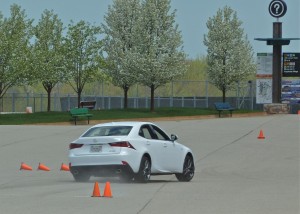

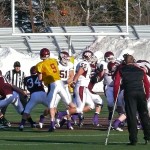
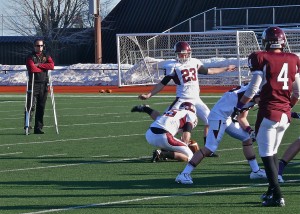
 John Gilbert is a lifetime Minnesotan and career journalist, specializing in cars and sports during and since spending 30 years at the Minneapolis Tribune, now the Star Tribune. More recently, he has continued translating the high-tech world of autos and sharing his passionate insights as a freelance writer/photographer/broadcaster. A member of the prestigious North American Car and Truck of the Year jury since 1993. John can be heard Monday-Friday from 9-11am on 610 KDAL(www.kdal610.com) on the "John Gilbert Show," and writes a column in the Duluth Reader.
John Gilbert is a lifetime Minnesotan and career journalist, specializing in cars and sports during and since spending 30 years at the Minneapolis Tribune, now the Star Tribune. More recently, he has continued translating the high-tech world of autos and sharing his passionate insights as a freelance writer/photographer/broadcaster. A member of the prestigious North American Car and Truck of the Year jury since 1993. John can be heard Monday-Friday from 9-11am on 610 KDAL(www.kdal610.com) on the "John Gilbert Show," and writes a column in the Duluth Reader.